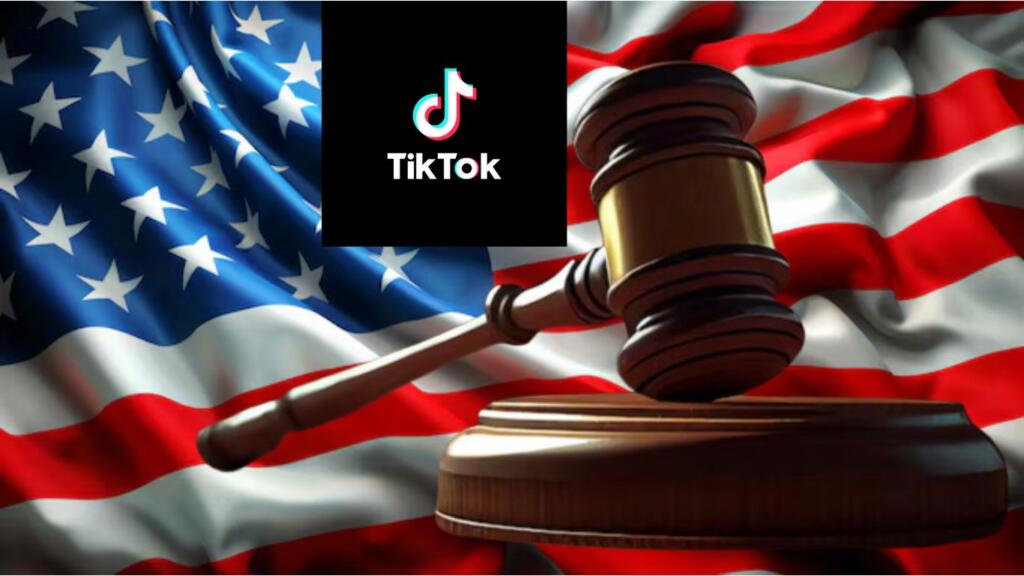TikTok officially shut down its operations in the US on Saturday night, just hours before a law banning the app came into effect. When users tried to open the app, they were met with a message saying, “Sorry, TikTok isn’t available right now. A law banning TikTok has been enacted in the US Unfortunately, that means you can’t use TikTok for now.”
The app, along with other ByteDance-owned platforms like CapCut, disappeared from Apple’s App Store and Google Play. This shutdown followed the Supreme Court’s unanimous decision on Friday to uphold a law requiring TikTok’s Chinese parent company, ByteDance, to sell the app to a non-Chinese owner. If ByteDance did not comply by Sunday, the app faced removal from app stores and a ban on web hosting support.
Why is TikTok banned in the US?
TikTok was banned in the US due to national security and data privacy concerns. Lawmakers made the argument that TikTok’s Chinese parent company, ByteDance, potentially could share any data from an American user and manipulate the contents shown to Americans under China’s national security law. The risk was that public opinion could sway, propaganda would proliferate, and certain topics would not be allowed into the public light. The US government legislated on selling ByteDance TikTok to an American or allied company; however, this ban arose as a result of its failure to adhere to the stipulated time limit. Many legislators across party lines praised this action by asserting the potential security threats the application may pose for national security within the US. This was a judgment endorsed by the Supreme Court that eventually removed the service from online store shelves and internet-hosting servers. TikTok has denied all allegations and called the ban a violation of free speech, leaving the app’s future uncertain until a resolution or sale is finalized.
Timeline of TikTok Ban in the US
April 2023
President Joe Biden signed a law requiring TikTok’s Chinese parent company, ByteDance, to sell the app to a U.S.-based or allied company. The law stated that if ByteDance failed to comply, TikTok would be banned in the United States.
Months Following the Law
ByteDance explored potential options to divest or address US concerns but did not finalize any deal. Lawmakers continued to express bipartisan concerns about TikTok’s national security risks.
January 12, 2025
The US Supreme Court upheld the law. The Court asked ByteDance to sell TikTok by January 14, 2025, or face a ban. This decision paved the way for the ban of the app.
January 17, 2025
The Biden administration announced that it would leave enforcement of the ban to the incoming Trump administration, creating uncertainty over the app’s future.
January 18, 2025
TikTok CEO Shou Zi Chew thanked President-elect Donald Trump for his willingness to consider a resolution to reinstate the app. ByteDance signalled that negotiations might continue to avoid a prolonged ban.
January 19, 2025
TikTok’s shutdown officially went into effect just hours before the deadline, removing the app from Apple’s App Store and Google Play. A message displayed to users confirmed the suspension.
January 20, 2025 (Expected)
President-elect Trump is expected to decide on a possible 90-day extension to allow ByteDance more time to sell TikTok or reach a resolution to reinstate the app.
TikTok’s Uncertain Future Amid US Concerns
TikTok’s chief executive, Shou Zi Chew, said he had been in touch to address the situation. He reportedly met with Trump last month and was optimistic that TikTok would return soon. A message posted on the app to its users said that Trump promised to find a way to reinstate the application on Monday after he became president. “Please stay tuned!” it said.
Its 170 million US users were left in uncertainty with the app’s shutdown. Many creators have requested their followers to move on to other platforms. Some of the users started switching to other apps, and some protested this move online.
Lawmakers from both parties have expressed concerns about TikTok’s ties to the Chinese government. They argue it could pose a national security risk by exposing Americans’ data to Beijing or influencing public opinion. ByteDance has denied these claims, calling the ban a free speech issue.
Trump May Reverse the Law
Trump’s stance on TikTok has shifted over the years. In 2020, he wanted to ban the app. However, during his 2024 campaign, he joined TikTok, gaining over 14 million followers. On Truth Social, he posted, “Why would I want to get rid of TikTok?” and later said he would “save TikTok.”
The Biden administration passed the law in April and left enforcement to the incoming Trump administration. President-elect Donald Trump has indicated he might grant TikTok a 90-day extension to allow time for ByteDance to sell the app. Speaking to NBC’s Kristen Welker, Trump said, “The 90-day extension is something that will most likely be done because it’s appropriate. We have to look at it carefully. It’s a very big situation.”
The US is not the First to Ban Tiktok
As of January 19, 2025, several countries have implemented bans or restrictions on TikTok due to concerns over data privacy, security, and content. Notably, India banned TikTok and 56 other Chinese apps in 2020, citing privacy and security issues. In December 2024, Albania put a one-year ban on TikTok following a tragic incident involving a teenager, linking the platform to negative influences on youth. Additionally, various nations, including the US, Canada, the UK, and several European countries, have enforced partial bans, particularly on government-issued devices, due to security concerns.
